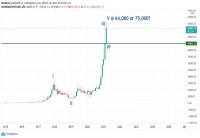|
Opalesque Industry Update - Agecroft Partners is seeing widespread demand from institutional investors for Commodity Trading Advisors (CTAs), which is a dramatic change from the historical reluctance of many institutional investors and their consultants to allocate to this strategy. Over the past 10 years, the number of pension funds allocating to hedge funds has steadily increased, along with the percent of their average portfolio allocation. While many of the major hedge fund strategies, such as Equity Long/Short, have been widely accepted by institutional investors for many years, CTAs have only recently been accepted as a core hedge fund allocation as pension funds scramble to enhance their returns and reduce the volatility of their portfolios after the market correction of 2008. CTAs are managers that typically use a quantitative trading program to generate momentum or trend-based returns by going long or short futures contracts in areas such as commodities, foreign currencies, equity indexes, fixed income and interest rates. Before 2009 very few pension funds allocated to CTA despite the fact, the strategy represents approximately 15% of the hedge fund industry and is one of the oldest and most regulated of all hedge fund strategies. In addition, CTAs have been one of the only strategies to generate returns that have been negatively correlated to equity benchmarks. The reason institutional investors avoided CTAs was because they could not understand how the systematic models worked nor could they evaluate which firm’s model was superior. Most large institutional investors were more comfortable with fundamentally driven investment strategies that sounded similar to their long only managers' investment processes. After the 4th quarter of 2008, pension funds realized that their portfolios were not as diversified as they previously believed. Investment committees were shocked when they received their 2008 year end performance report which showed correlations of performance between their managers had risen significantly. Many saw their emerging market equity managers down over 50%, their US equity managers down in the mid 40% range, high yield mangers down close to 30%, the DJ-UBS Commodity Index down 35% and the average hedge fund manager down in the high teens. While all this carnage was going on in their portfolios, the Barclays CTA index was up over 14%, which began to get institutional investors attention. Over the next year, many institutional investors along with their consultants began to take a closer look at CTAs and discovered that not only did they do well in 2008, but the average CTA was also up in 2000, 2001 and 2002, which in addition to 2008 were the last 4 years the S&P had posted negative returns. Some CTAs also exhibited a historical dynamic correlation to the equity markets where they were positively correlated in up equity markets and negatively correlated in down markets, which was driven by their systematic models that are designed to make money based on both bull and bear trends in markets. This means that correlations under explain the diversification benefits of these trend following CTAs. A better statistic to look out is their correlation in down markets minus their correlation in up markets. The 4th quarter of 2008 also helped to accelerate the demand for CTAs as many institutional investors enhanced their due diligence process after the Madoff fraud was exposed and the unpleasant experience of many hedge fund managers raising gates on withdraws or suspending redemption due to a mismatch in fund liquidity provisions terms and the underlining investments. During this period, CTAs were fully able to offer full liquidity to their investors and to accurately value their portfolios at all times. These events put a greater focus on liquidity, separate account management, transparency and risk management. CTAs in general trade only in highly liquid, price-transparent futures and currency contracts and typically allow their investors monthly liquidity. Some CTAs have even begun to offer weekly or daily liquidity. While many hedge funds are reluctant to take on separate accounts, CTAs typically welcome separate accounts and offer full transparency of the underlying securities. Many of the leading CTAs are mature and well-developed business, and so are able to offer an institutional infrastructure with large teams in research, technology, operations and legal/compliance. These attributes are all extremely compelling to institutional investors which have lead to a large increase in their allocations to CTAs. Some of the notable institutions that have allocated to CTAs include: Texas Teachers Retirement System, New Jersey Public Employees’ Retirement System and Eastman Kodak Co. Once investment trends begin within the pension fund industry they tend to last for a very long time, where the largest funds act as first movers and the rest of the industry slowly replicates the decisions by the industry leaders. This same phenomenon is also taking place within the endowment and foundation market place. The big question left with institutional investors is how to differentiate between over a thousand CTAs in the market place. Over the past 2 years, a majority of institutional investors have chosen to make their initial CTA allocation with a small number of the largest managers in the industry, which has caused these CTA firms' assets to swell significantly. The major problem with hiring mangers that have experienced such rapid growth is that you can’t participate in the historical performance before you invested in the fund. Although many of these managers state they continue to trade across a large number of markets, the fact is that the least liquid but more diversifying, markets may represent a smaller and smaller percent of their portfolio as they grow. Some may even alter their investment process or reduce the level of targetted volatility and returns in order to expand capacity. Institutional investors should consider using multiple evaluation factors to select the appropriate CTA manager which include asset under management, size of research team, organizational infrastructure, research process, historical performance and risk controls. Instead of allocating to the largest managers, investors might want to consider investing in managers within the mid-sized asset range of $2 billon to $10 billion. This asset size is big enough to support a substantive research team, but not too large where their alpha may be diluted over a growing asset base. One of the keys to running a successful CTA over time is to constantly enhance proprietary models, because if left static eventually the models' effectiveness erodes, causing a decline in performance. As a result, it is important to hire a CTA with a well built out research team. In evaluating their research process one of the key factors to focus on is how much transparency into the process they give investors. Since CTA models and organizations tend to evolve over time, it is important to put greater emphasis on more recent short and medium term performance when examining a firm’s historical track record. Another strategy gaining popularity among institutional investors is hiring a small basket of CTAs - since individual CTAs can be volatile and are hard to differentiate between, many investors prefer to spread their CTA allocation over smaller investments with 2 or 3 managers. The benefits are capturing the uncorrelated returns, while reducing the potential drawdowns in performance.
In summary, CTAs have come a long way over the past 2 years in gaining credibility with institutional investors. These investors have been drawn to their uncorrelated historical return stream with long only benchmarks, the institutional structure of the leading firms in the strategy, the high level of liquidity in the underlining investments and fund term, ease of creating a separate account and most importantly strong historical performance. Agecroft Partners believes that we are in the initial stages of seeing significant assets flows from institutional investors into this strategy. Press release:Source |
Industry Updates
Agecroft Partners see institutional investors finally allocating to CTAs
Monday, June 06, 2011
|
|





 RSS
RSS







